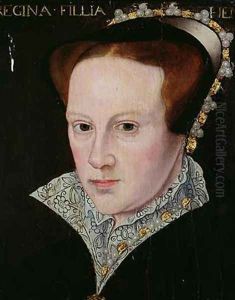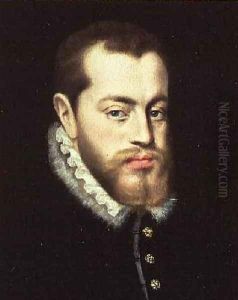Antonio Moro Paintings
Antonio Moro, also known as Anthonis Mor, Anthonis Mor van Dashorst, and Antonio Moro, was a prominent Dutch portrait painter of the 16th century, born in Utrecht, Netherlands in 1517. He was a key figure in the Northern Renaissance, primarily celebrated for his sophisticated and insightful portraits of European nobility. Moro's early training and influences remain somewhat obscure, but it is believed that he was a pupil of Jan van Scorel, a leading Dutch painter of the time, which helped him develop a detailed and refined painting style that was ahead of his time.
Moro's career took a significant turn when he became a court painter to the Habsburg rulers, which marked the beginning of his travels across Europe, painting nobility and royalty. His notable works include portraits of Mary I of England, Philip II of Spain, and Maximilian II, Holy Roman Emperor, among others. These portraits are distinguished by their meticulous detail, psychological depth, and the use of rich colors, which became hallmarks of Moro's style.
The artist's ability to capture the character and personality of his sitters, along with his skill in portraying fabrics and jewels with exceptional realism, earned him widespread acclaim. His portraits were not just mere representations but also conveyed the power, status, and elegance of the high-profile figures he painted, making him a favorite among the European elite.
Moro spent a significant part of his career in Spain, where he influenced the development of portrait painting. Despite his success, little is known about his personal life, and his later years seem to have been spent in relative obscurity. Antonio Moro passed away in Antwerp, Belgium, in 1577. His legacy lives on through his profound impact on the portrait genre, bridging Northern European and Spanish schools of painting and setting a standard for realism and psychological insight in portraiture that influenced generations of artists after him.

